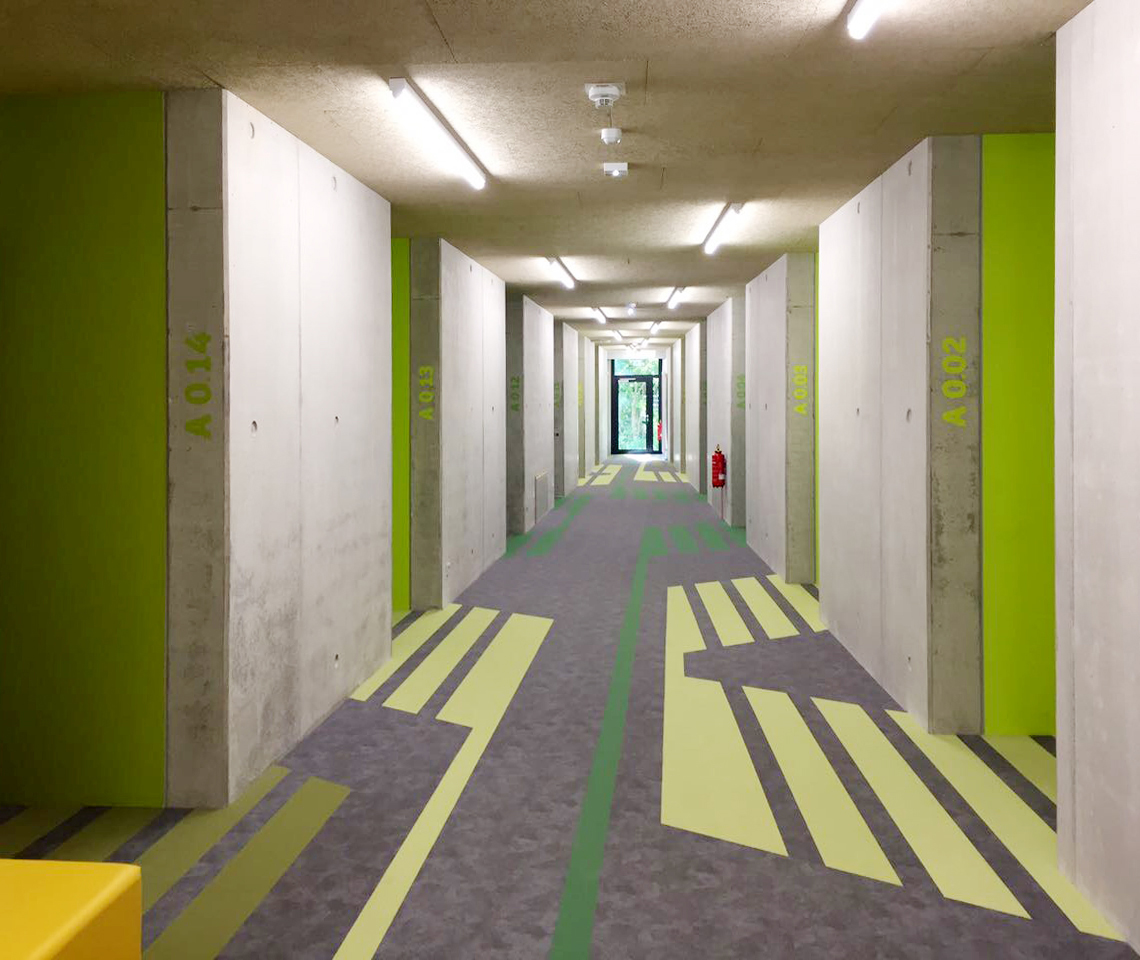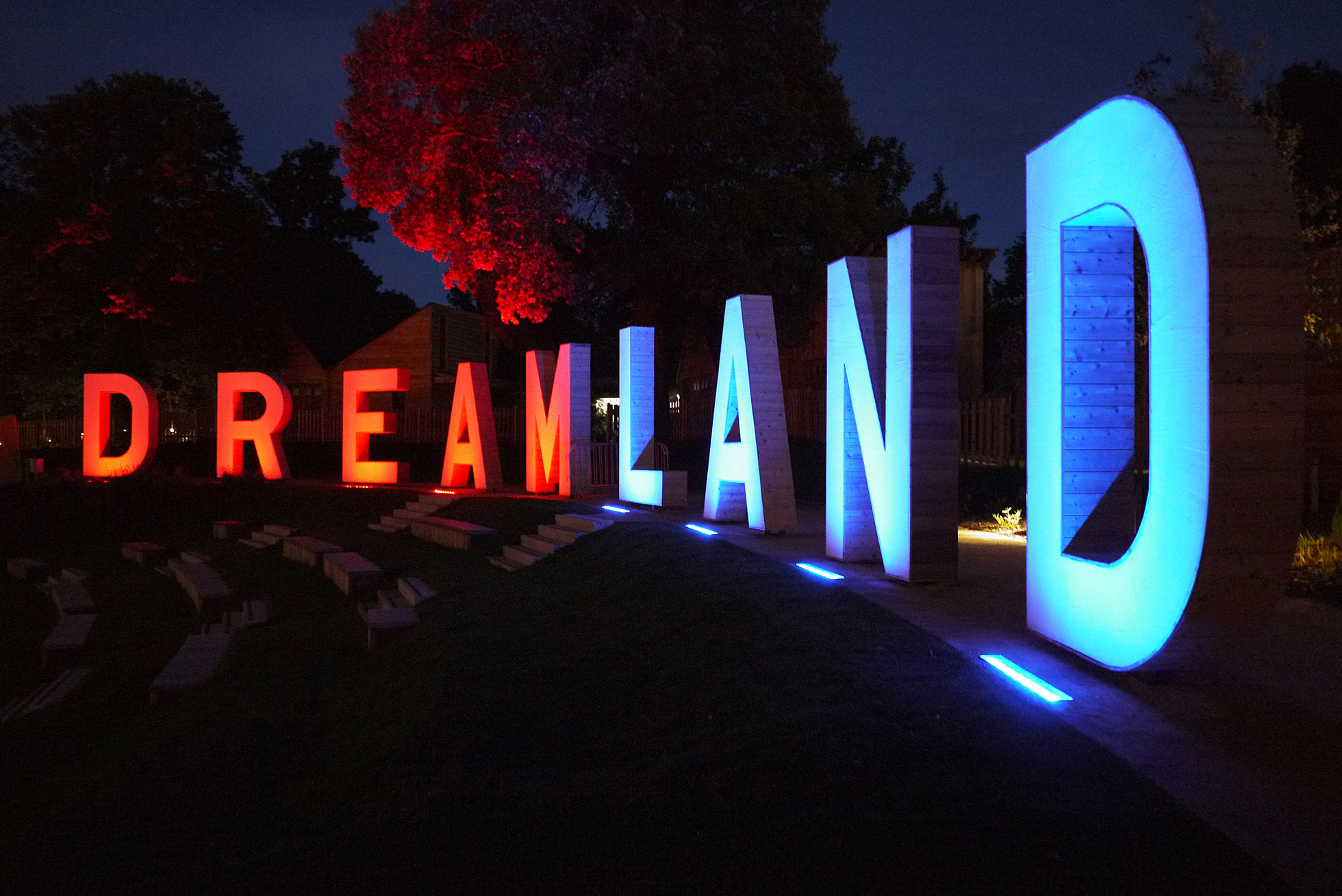Spaceagency is a multidisciplinary firm from the United Kingdom which merge architecture with masterplanning, branding, graphic design and wayfinding. If you missed part one of this interview you can read it here

Bayreuth Youth Hostel
Photo: Hufton & Crow
Chelsea Doorne – In terms of that natural movement, do you think that if you were to revisit your earlier projects conducted with Space Syntax, that the results would change given how we’re now more reliant on our smartphones and their mapping?
Sarah Manning – What was really interesting to me when I first joined Space Syntax Limited is that when you were new there, they would send you out into the street to do counts. You would go at a certain time of day to a particular spot and you’d do, like, lunchtime Monday, lunchtime Tuesday, lunchtime Wednesday. What was amazing is that you could stand for an hour on the street corner and within a very small variation you’d have the same number of people passing. When you think about it, when you’re standing there on the street, you think that all these people, they’re making different decisions every day. They might be working from home today or they might be going to lunch somewhere else. You’d wonder how is it possible that I had 121 yesterday and I have 123 today in that same period of time. How is that possible?
Somehow, what comes out, is that people follow predictable patterns. We’re like ants. You are making your own decisions, but someone’s filling in for you. It’s the same with traffic. There’s like a weird group logic.
Chelsea Doorne – I guess we can always override it as well. While Google Maps could recommend one route, you can always decide to take another.
Peter Feldmann – Also, we find in many retail-orientated developments, like the client of course, doesn’t want the shoppers to look at their phones. They want them to look at the shops and what’s on offer. I suppose, in that sense, it’s also in the client’s interest that people don’t revert to Google Maps in a shopping environment, and just kind of end up staring at their phone rather than the goods in the shop.
Sarah Manning – Well, engaging with the space. I think that’s a bigger issue right now. To what extent are you actually present and engaging with real environment.

ASTANA Expo 2017
Photo by Peter Feldmann
Michael Smith – I’m interested in some of your other work to do with branding of places and the importance of branding places. It seems that corporatization is becoming more and more pervasive into our built-in environment. Watching your presentation today, a critical question came to mind. Does a freeway or a highway, need a logo? Does it need a brand?
Sarah Manning – We get approached a fair amount for branding proper. We don’t do a lot of corporate branding. We are very much still focused on public space and work for public good. A lot of what we do, we may call it branding, but it’s identity. So, no, a highway doesn’t necessarily need a logo. But I think some sort of an emblem or an identity, which becomes associated with something like a piece of infrastructure, can give it an additional significance or importance. We wouldn’t be keen to have a big global brand come to us and say, “Can you put our brand on a space? We’re going to sponsor a space. Can you find out the best way to put Coca-Cola in this public space?” I think it’s more that we’re always looking to develop an identity for a project.

Dreamland
Photo: Light Bureau
Michael Smith – It’s interesting you bring up that idea of space, and a brand coming in to impose themselves on a space. In Melbourne the government is pushing is for Apple to deliver a flagship store and demolish one of the buildings in the premier public space, Federation Square. There’s a question that this is a flagship brand, but also Federation Square has its own brand. I was wondering what happens when those brands collide? Do you have any insight into that?
Peter Feldmann – I think the bigger question, is that there’s not any straight answer to that right now. I mean, there is, of course, in many cities around the world a kind of trend going on that is about privatising public space, or what is perceived to be public space. I think the same kind of trends are happening in London, in New York, and Hong Kong for sure. Where, basically, private land ownership kind of takes over public land ownership. In many places it’s not even clear that you’re on private land. Somebody can kick you out if they don’t like your face essentially. I think that’s an ongoing struggle between different commercial and political forces that are colliding or that are at play in cities. I don’t know who’s going to win. I think it’s impossible to answer who’s going to win. I think it’s going to be an ongoing struggle and both sides are going to have to make arguments. But, I guess, it’s kind of an erosion of the city identity, little by little. It’s up to the city to say whether it’s worth it or not essentially to get the $X million.
Sarah Manning – It’s a naming rights thing. A couple of other people touched on this, talk of corporate interest or commercial interest really overtaking other types of public interests in the built environment – in architectural space, in urban space. I do think that we, that cities and citizens should be realising that and trying to take that back. Because, it’s happening online, it’s happening in public space. You don’t want your environment completely controlled by a private corporation.
Peter Feldmann – What you say is really interesting in relation to Google Maps. As people come to rely more and more on things like Google Maps or Apple maps, I think you should also realise that somebody controls these maps and they control what goes on the map and what does not go on the map. Does the church go on it or does the Apple Store go on it? Does the Starbucks go on it or does Costa Coffee go on it? They’re not free of commercial interests, of course. The more you become dependent or rely on these things, we should kind of realise, as people, I suppose, that maps are not neutral. They’re not neutral at all. But they’re highly kind of edited in a certain way.
Michael Smith – Coming back to the idea of the edge. Currently, the corporate space and the public space are quite blurred. Do you think we need to form an edge so that there’s a clear understanding when you’re passing a threshold? Or is better for us to have that blur?
Sarah Manning – I think that so much right now, and this is especially online, is that we’re passing into the corporate edge without realising it. And we’re giving up a lot of our autonomy or ability to think freely because what we’re being shown is being edited by corporate interests. But we don’t actually realise we’ve crossed through that threshold.
So, personally, and this is not really a professional opinion; it’s a personal opinion. I think that you should express a threshold between the public space and private space that has particular interests behind it.
We’re working on a public project in the city of Manchester, the U.K., right now, and every single decision is scrutinised by so many stakeholders, and the democratic process is so messy, and it takes such a long time. But you see all these different groups have had a say. The public has been able to have a say. There’s a process here that’s making sure that it’s not opaque. The interests are not opaque. The interests are all transparent, expressed, out on the table. I think it’s quite important that we retain some of that space.
Chelsea Doorne – Thanks for your time
Architecture is for everyone
Contact Us
Feel free to contact us with questions or feedback:
Latest Post
- A crisis of trust February 10, 2020
- The Square and the Park. October 28, 2019
- Fixing The Building Industry – A Wishlist September 12, 2019
- 2019 NATIONAL CONFERENCE DAY 2 June 24, 2019
- 2019 National Conference Day 1 June 22, 2019



Leave a Reply